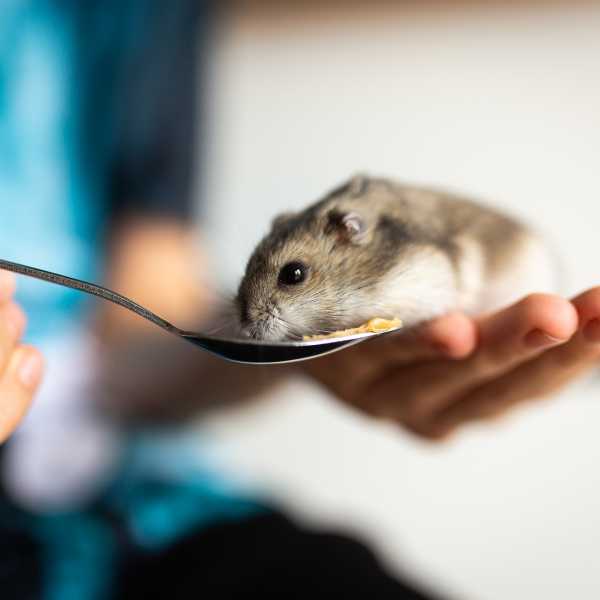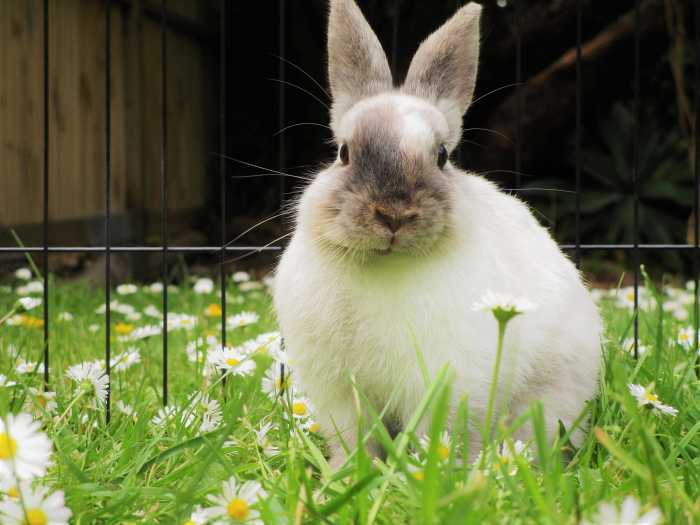
PetsRadar - Five common eye problems in rabbits
Posted on 3 January, 2022

Photo by Misha Walker on Unsplash
Written by Elizabeth Racine, DVM for PetsRadar
Eye problems in rabbits will cause your beloved bunny to suffer with dry, itchy, or irritated eyes. This can be especially problematic for pet rabbits, who are very susceptible to the effects of pain and stress. Eye problems can also worsen quickly, leading to chronic problems or even complete loss of vision. Although it can sometimes be difficult to find a veterinarian willing to work with rabbits, it is important not to delay in seeking treatment for an eye issue. Below are just a few of the most common eye conditions seen in rabbits.
1. Conjunctivitis
One of the most common types of eye problems in rabbits is conjunctivitis, also known as pink eye. Conjunctivitis is an inflammation of the membrane that lines the eyelids and the eye cavity. Conjunctivitis can occur in either one or both eyes, and may be caused by infections, irritants, or trauma to the area. A rabbit with conjunctivitis may have red and swollen eyelids, discharge from the eye, and prominent blood vessels in the white part of the eye. The rabbit may also paw at his face or rub his face on objects because the affected eye is itchy or painful. This condition is usually mild and can easily be treated with prescription ointments or eye washes from your veterinarian. However, if left untreated, conjunctivitis can worsen and may lead to corneal ulcers.
2. Corneal ulcers
The cornea is the clear part that covers the front portion of the eye. When this clear covering becomes damaged, the result is a painful, infected sore on the surface of the eye. Symptoms of a corneal ulcer include discharge (especially mucus or pus) from the affected eye, keeping the eye squinted or closed, redness of the eye, prominent blood vessels in the white part of the eye, and pawing at the eye. Because the cornea is clear, ulcers are typically not easy to see and this makes it difficult to distinguish between a corneal ulcer and a case of conjunctivitis. Your veterinarian will likely use a special fluorescent stain in the eye, which will settle into damaged areas of the cornea and allow them to be visualized with an ultraviolet light. If your rabbit is diagnosed with a corneal ulcer, treatment will likely include topical antibiotics, pain medications, and medications to speed healing. Depending on the severity of the ulcer, treatment can last anywhere from a week to a month or more. In severe cases, surgery may be indicated to help improve healing these kind of eye problems in rabbits.
3. Blocked tear ducts in rabbits (Nasolacrimal duct blockage)
The nasolacrimal duct is a narrow tube that runs from the eye to the nasal cavity, draining excess tears from the eye. This little tube is the reason why your nose runs when you cry! When a nasolacrimal duct becomes blocked, tears can’t drain from the affected eye. This can be caused by infections, inflammation, dental disease, or trauma to the area. Blockage of this duct can lead to excessive tearing, crusting around the eye, discharge from the eye, and mild conjunctivitis. Because these symptoms are so similar to other eye conditions, sometimes these rabbits are treated with topical medications but then they do not exhibit significant improvement. In order to address the blockage, your veterinarian will likely recommend sedating your rabbit and flushing the duct with warm sterile saline to remove any debris or discharge that may be blocking the duct and reduce the inflammation. Your rabbit will also likely be sent home on medications such as anti-inflammatory medication or antibiotics if needed. In some cases, underlying dental disease can cause the blockage, so this may also need to be addressed when it comes to eye problems in rabbits.
4. Cataracts in rabbits
A cataract occurs when the lens of the eye becomes cloudy and opaque. This can occur in one or both eyes, and may happen quickly or progress more slowly. Cataracts typically occur due age, genetics, trauma to the eye, or infection with a parasite called E. cuniculi. Very mild or minimally progressive cataracts may not require any treatment and often have a minimal impact on vision. However, severe or rapidly progressive cataracts are typically treated surgically to preserve vision and reduce pain. Cataracts caused by E. cuniculi may also be treated with oral anti-parasitic medications. Severe, untreated cataracts can lead to blindness and glaucoma. If surgery to correct the cataract is not an option, enucleation – removal of the affected eye – may be recommended to keep your rabbit comfortable. Most rabbits can still have an excellent quality of life after enucleation with appropriate care, showing that not all eye problems in rabbits are insurmountable.
5. Rabbit glaucoma
Glaucoma is an increased in the pressure in the eye, usually due to a reduced drainage of the fluid that fills the eyeball, also known as aqueous humor. It is a complex disease with many possible causes, including genetics, abnormal eye conformation, and as a consequence of other chronic eye problems in rabbits. This condition is often accompanied by symptoms such as squinting, swelling of the eye, discharge, and a cloudy appearance. In addition to causing pain and protrusion of the eye, untreated glaucoma will eventually lead to blindness and rupture of the eyeball. Glaucoma is typically treated with topical medications to reduce pressure, improve drainage of aqueous humor, and manage pain. Once diagnosed, your rabbit will need to stay on these medications for life. Frequent rechecks with your veterinarian will be necessary to monitor the intraocular pressure (IOP) and adjust your rabbit’s medications if necessary. In severe cases, your veterinarian may recommend removing the affected eye to reduce pain and pre-empt a rupture.
Don’t wait to address eye problems!
Eye problems are often painful, and may lead to permanent damage to the eye if not addressed. If you suspect your rabbit is having an eye issue, it is important to see your veterinarian right away for appropriate diagnosis and treatment. With timely intervention, many eye problems can be treated and managed. Your veterinarian can help you choose the best course of help to preserve vision and get your pet’s eye health back on track.
Elizabeth Racine, DVM
Since obtaining her doctorate in veterinary medicine, Dr. Racine has worked exclusively in small animal general practice. Her work has been featured in blog posts, articles, newsletters, journals, and even video scripts.
To read the original article written by Dr Racine for PetsRadar, please visit: www.petsradar.com/advice/five-common-eye-problems-in-rabbits
Tags:



